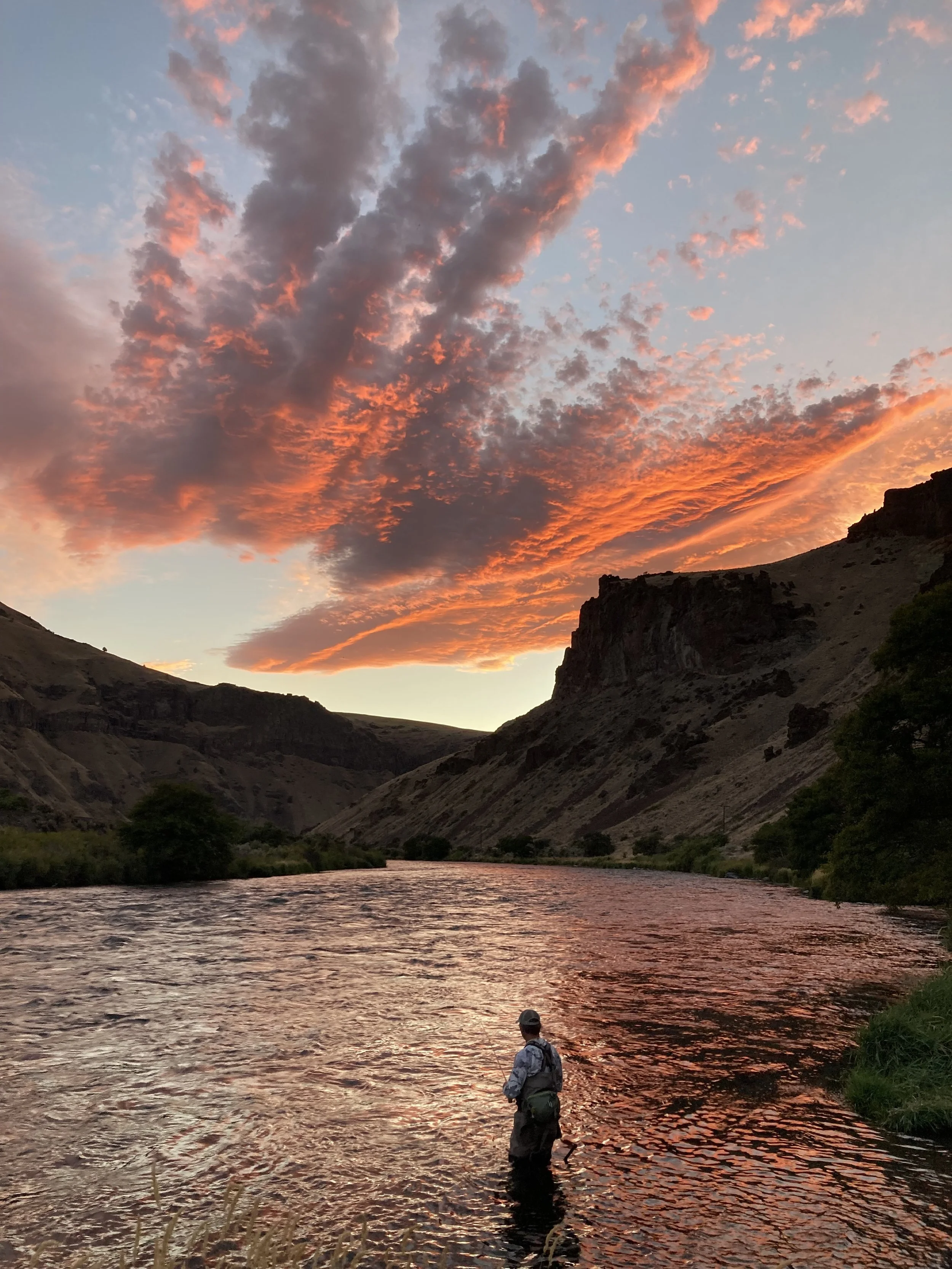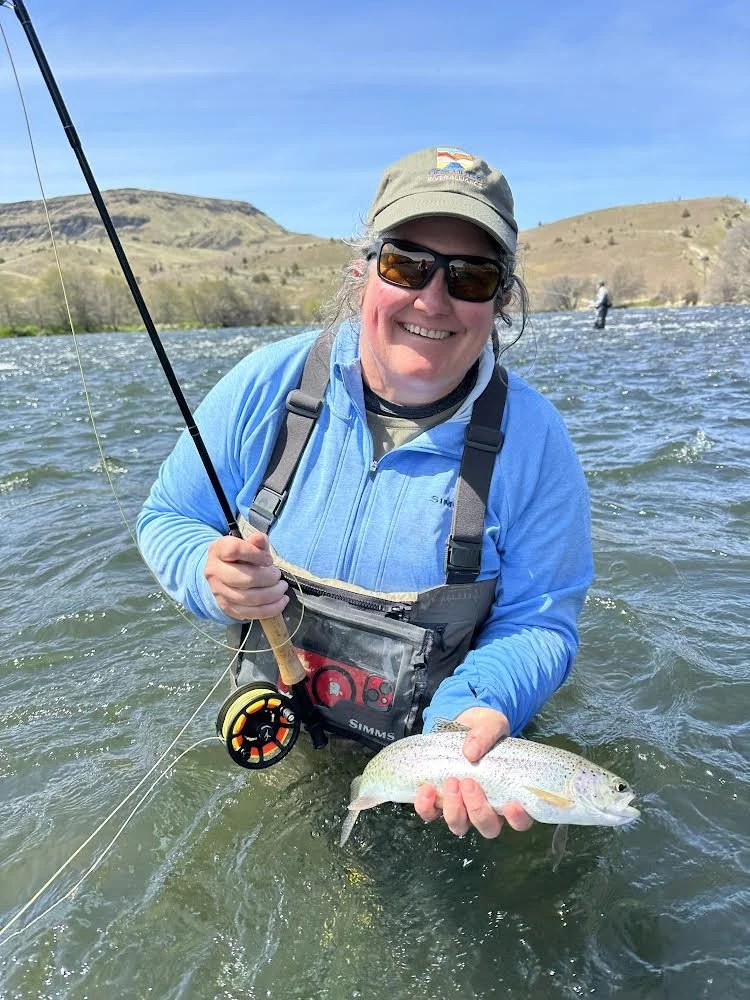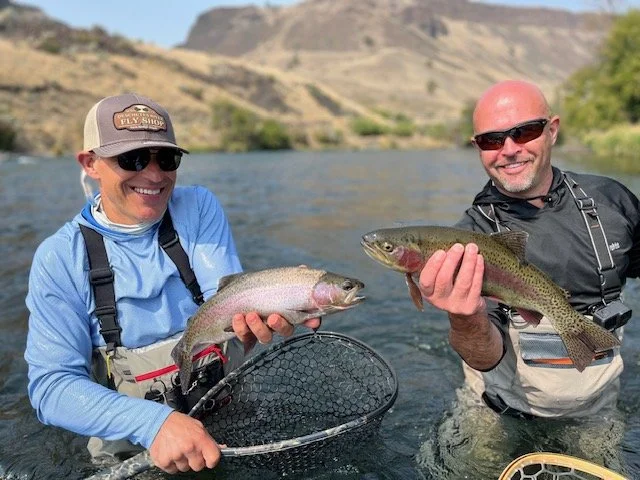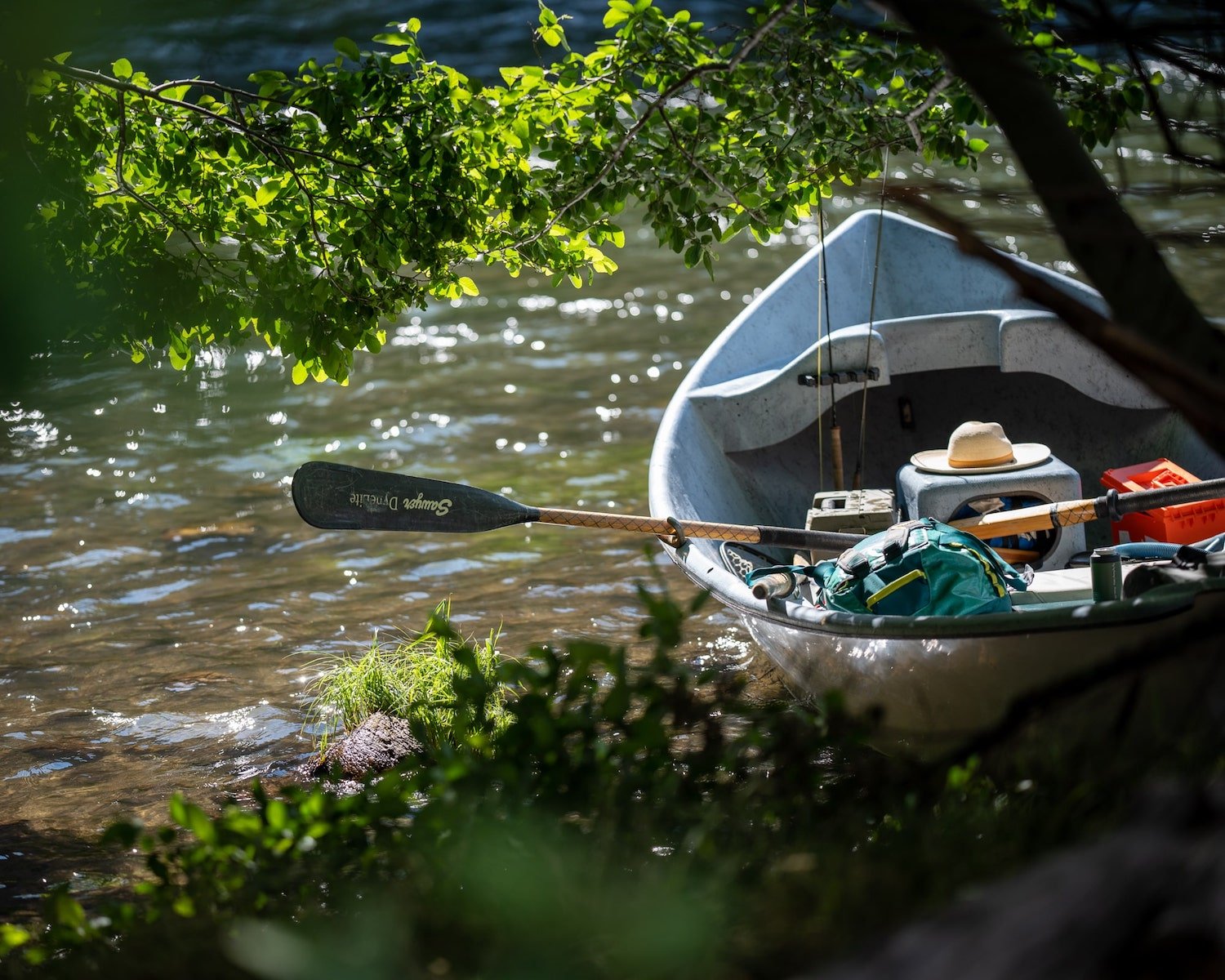The Long Emergency: Water Quality Problems Persist in 2025
It’s caddis season: for the 15th year in a row, caddis, mayflies and stoneflies—and the birds and fish and fishers that depend on them for their livelihoods— are challenged by compromised water quality. The decline in water quality parameters began with the operation of Portland General Electric’s Selective Water Withdrawal Tower in 2010.
DRA monitoring produces record of ongoing violations
Hannah Camel, DRA Water Quality Coordinator
As part of our long-term monitoring program, the Deschutes River Alliance currently has three water quality monitoring stations along the Lower Deschutes River—one near Warm Springs, one in Maupin, and our newest location near the river’s mouth.
At each site, we continuously track three key water quality parameters: pH, temperature, and dissolved oxygen. Already in 2025, we are seeing frequent violations of Oregon's water quality standards across all sites. And while each parameter presents its own challenges, pH levels are becoming a particularly serious concern.
According to Oregon water quality standards, the maximum allowable pH in the Deschutes Basin is 8.5. However, our data shows that daily pH levels are regularly peaking around 9.0. While a difference of 0.5 might seem small, it’s actually quite significant: the pH scale is logarithmic, meaning a pH of 9 is ten times more alkaline than a pH of 8.
This matters because elevated pH can have a serious impact on aquatic life. For fish, especially cold-water species like trout and salmon, high pH can cause respiratory stress, interfere with oxygen absorption, and damage gill tissues. It can also disrupt metabolic processes, increasing overall stress and making them more vulnerable to disease. These are exactly the kinds of impacts water quality standards are designed to prevent.
Below, you’ll find a summary of current water quality violations recorded at each of our monitoring sites. Please note: the new site near the river mouth does not yet support live data updates. We’ll be posting monthly summaries from that location as data is downloaded and reviewed.
3 monitoring sites, three disturbing trends continue
Warm Springs Site:
This site, located approximately 0.3 miles below the Reregulating Dam, provides insight into water quality in the upper section of the Lower Deschutes.
pH Violations:
pH levels have exceeded the state standard of 8.5 on 37 out of 48 days monitored. These values routinely peak near or above 9.0, which is a strong indicator of nutrient-fueled algal growth.Temperature:
So far, temperature violations have occurred only once at this site. This is typical for the early part of the year, as flows from the dam and cooler ambient temperatures help keep thermal levels in check. However, this could change as the season warms.Dissolved Oxygen:
DO levels have remained above the state’s minimum thresholds throughout the monitoring period. While this is encouraging, it is important to note that warmer temperatures later in the season often coincide with reduced oxygen availability.Maupin Site:
Located further downstream, this site is critical for evaluating cumulative effects on water quality.
pH Violations:
Exceeded the 8.5 threshold on all 48 days monitored. This makes Maupin the most pH-impaired of the three sites and reflects a consistent pattern of alkaline conditions likely driven by nutrient-rich upstream inputs.Temperature Violations:
15 out of 48 days exceeded the state’s protective threshold of 13°C (55.4°F) during the designated salmon and steelhead spawning and migration season. These warmer conditions can reduce egg viability, disrupt fry development, and increase the risk of disease.Dissolved Oxygen Violations:
23 out of 48 days fell below the required minimums, especially during the spring and early summer when resident trout are actively spawning. Low DO at this time poses a serious threat to egg incubation and overall fish survival.
Moody Site (near the mouth):
This newly established site near the confluence with the Columbia River now allows us to monitor water quality conditions across the full 100-mile stretch of the Lower Deschutes.
pH Violations:
Exceeded the state standard on 22 of the 24 days monitored. This confirms that elevated pH levels persist even in the lower reaches of the river, far from the immediate influence of the SWW Tower—but still connected by the river’s flow.Temperature Violations:
Also recorded on 15 out of 24 days, again all within the salmonid spawning season. These temperature exceedances near the mouth suggest that warming effects from upstream inputs are not being adequately diluted or cooled before reaching the river’s mouth.Dissolved Oxygen:
Monitoring began shortly after the pH and temperature sensors were deployed. DO data will be included in our next update as more measurements are collected and verified.
These early-season results reinforce what we've seen in previous years: persistent water quality issues—especially elevated pH and temperature—continue to challenge the ecological health of the Lower Deschutes River. We will continue to monitor and share updates as the 2025 season progresses.
More From The Blog
Subscribe the the DRA Newsletter
The Deschutes River Alliance is your focused voice to protect the lower Deschutes River, its cold water flows and the fish and wildlife that are sustained by them. We send regular emails with important data and news about the lower Deschutes River. We will not sell or loan your contact information to others.
How to Support the DRA
Everyone wants clean, healthy water in the Deschutes River. Oregonians cherish our clean and healthy waterways to provide drinking water, wildlife habitat and recreational activities. The lower Deschutes River is a federally designated Wild & Scenic River, and a national treasure. It must be protected for the environmental and economic health of Central Oregon. We believe by working together we can return the lower Deschutes River to full health.






















